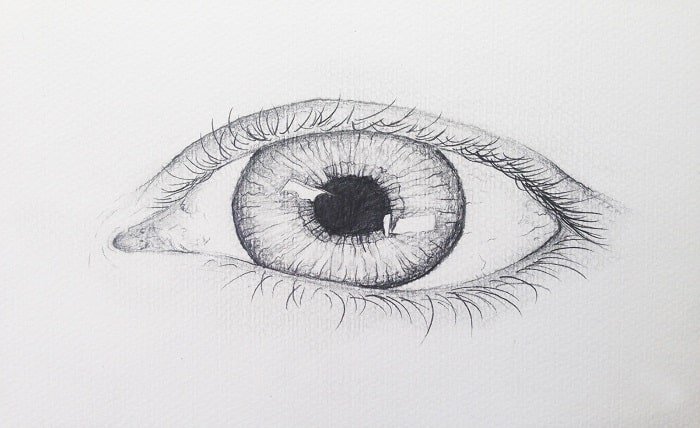Art of Drawing Easy: A Comprehensive Guide for Beginners

Introduction
Drawing is a universal form of expression, accessible to anyone with a pencil and paper. While some view it as a complex skill requiring years of practice, the truth is that drawing can be easy and enjoyable for everyone. Whether you’re a complete novice or someone looking to improve their basic skills, mastering the art of drawing easy can be a fulfilling journey. In this blog post, we’ll explore various techniques, tips, and tutorials that make drawing easy and fun, allowing you to create beautiful art with confidence.
Why Drawing Easy is Important for Beginners
Starting with drawing easy subjects is crucial for beginners because it builds foundational skills without overwhelming complexity. When you focus on drawing easy shapes, patterns, and objects, you gradually develop your hand-eye coordination, understanding of proportions, and the ability to translate what you see onto paper. This approach not only boosts confidence but also provides a solid base from which you can tackle more challenging drawings in the future.
Essential Tools for Drawing Easy
To get started with drawing easy, you don’t need a lot of fancy tools. A simple set of pencils, erasers, and paper will suffice. However, choosing the right materials can make your drawing experience smoother and more enjoyable. For drawing easy sketches, a set of graphite pencils ranging from 2B to 6B is ideal. These pencils offer a good range of hardness, allowing you to create both light and dark lines. A good quality eraser is also essential for correcting mistakes as you practice drawing easy shapes and lines.
Basic Techniques for Drawing Easy
Understanding basic techniques is key to drawing easy and accurate sketches. One of the simplest techniques is using basic shapes as a foundation. For instance, when drawing easy objects like a cat or a car, start by sketching circles, squares, and triangles. These shapes can be refined and connected to form more complex figures. Another important technique in drawing easy sketches is shading. By learning how to shade properly, you can add depth and dimension to your drawings, making them appear more realistic.
Step-by-Step Guide to Drawing Easy Shapes
When it comes to drawing easy subjects, starting with shapes is the way to go. Here’s a step-by-step guide to drawing easy basic shapes:
- Start with Circles: Begin by drawing a simple circle. This will be the foundation for many other shapes and objects.
- Add Ovals: Practice drawing ovals in various orientations. Ovals are great for creating forms like faces, bodies, and even animals.
- Square and Rectangle: Draw squares and rectangles to practice symmetry and precision. These shapes are essential when drawing easy structures like houses or furniture.
- Triangles and Trapezoids: Incorporate triangles and trapezoids to practice angles and dynamic lines, which are useful in drawing easy landscapes and abstract designs.
By mastering these basic shapes, you’ll find drawing easy objects much simpler and more intuitive.
Drawing Easy Animals: A Beginner’s Tutorial
One of the most enjoyable aspects of drawing easy is sketching animals. Animals are a popular subject for beginners because they offer a range of shapes and forms that are easy to replicate. Here’s a quick tutorial on drawing easy animals:
- Drawing a Cat: Start with a large oval for the body and a smaller circle for the head. Add triangles for the ears and smaller ovals for the paws. Connect these shapes, refine the lines, and add details like whiskers and eyes.
- Drawing a Fish: Draw an oval for the body and add a triangle for the tail. The fins can be created with curved lines. Finish by adding scales and eyes for detail.
- Drawing a Bird: Begin with a small circle for the head and a larger oval for the body. Add a triangle for the beak and curved lines for the wings. Drawing easy birds involves smooth, flowing lines that capture the simplicity of the form.
These tutorials make drawing easy animals approachable, even for those with little experience.
Drawing Easy Objects from Everyday Life
Another great way to practice drawing easy is by sketching everyday objects. From a coffee cup to a chair, everyday items offer excellent practice for honing your skills. When drawing easy objects, focus on the basic shapes that make up the item. For example, a coffee cup starts with a simple cylinder, and a chair can be broken down into rectangles and straight lines. By focusing on these forms, drawing easy objects becomes a straightforward and rewarding task.
Using References to Make Drawing Easy
Using references is a powerful tool in making drawing easy for beginners. Whether you’re drawing from life or using photographs, references help you understand the proportions, perspectives, and details of what you’re drawing. When drawing easy subjects, start by studying your reference closely. Identify the basic shapes and outline them lightly on your paper. Gradually refine your drawing by adding details and shading. This method not only makes drawing easy but also enhances your observational skills.
How to Make Drawing Easy and Fun
For many, the key to drawing easy is keeping the process fun and relaxed. Drawing should be an enjoyable activity, not a stressful one. To make drawing easy and fun, try incorporating playful exercises into your routine. For example, practice doodling random shapes and turning them into characters or objects. Experiment with different styles, like cartooning or abstract art, to keep things interesting. Remember, the goal of drawing easy is to explore creativity without pressure, so embrace mistakes as part of the learning process.
Advancing Your Skills Beyond Drawing Easy
Once you feel comfortable with drawing easy subjects, you may want to challenge yourself by moving on to more complex drawings. Start by adding more details to your sketches or experimenting with different textures and shading techniques. You can also try drawing from different perspectives, such as three-quarter views or using foreshortening. Although these concepts may seem intimidating, your foundation in drawing easy will make it easier to tackle these advanced techniques.
Conclusion
Drawing easy isn’t just about simplicity; it’s about building confidence and enjoying the creative process. Whether you’re sketching animals, objects, or abstract shapes, the act of drawing can be incredibly rewarding. By following the techniques and tips outlined in this guide, you’ll find that drawing easy is accessible to anyone, regardless of skill level. So grab your pencil, start with simple shapes, and enjoy the journey of bringing your ideas to life on paper.
FAQs
1. What does “drawing easy” mean?
Drawing easy refers to focusing on simple subjects and techniques that are beginner-friendly and less complex, making it accessible for everyone.
2. What are some easy things to draw for beginners?
Some easy things to draw include basic shapes, everyday objects, simple animals like cats and birds, and abstract designs. Drawing easy subjects like these helps build foundational skills.
3. How can I improve my drawing skills?
To improve your drawing skills, start with drawing easy subjects, practice regularly, use references, and gradually introduce more complex techniques as you gain confidence.
4. What tools do I need for drawing easy sketches?
For drawing easy sketches, you’ll need basic tools like pencils (2B-6B), paper, and an eraser. As you progress, you may add colored pencils or markers for more variety.
5. Can I learn to draw even if I have no experience?
Absolutely! Drawing easy is the perfect way to start learning. With practice and patience, anyone can develop their drawing skills, regardless of prior experience.





